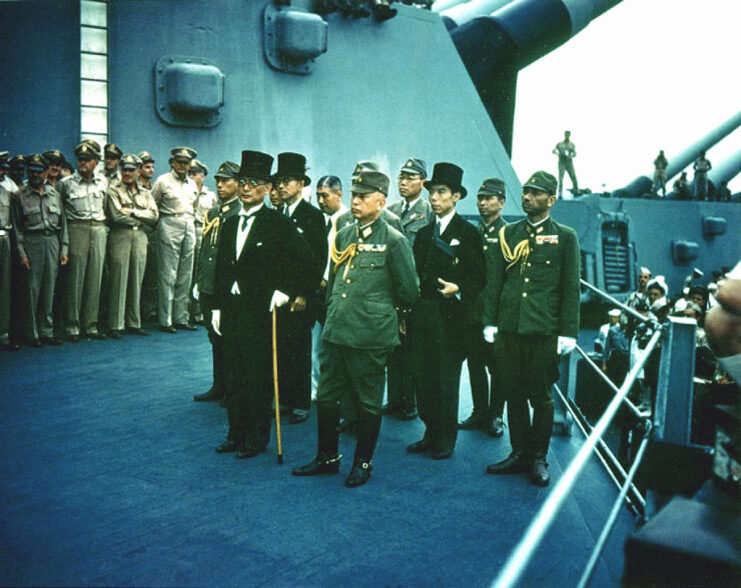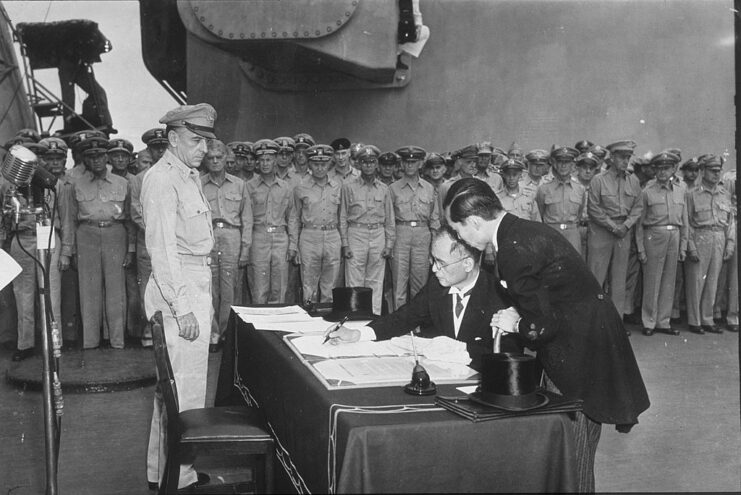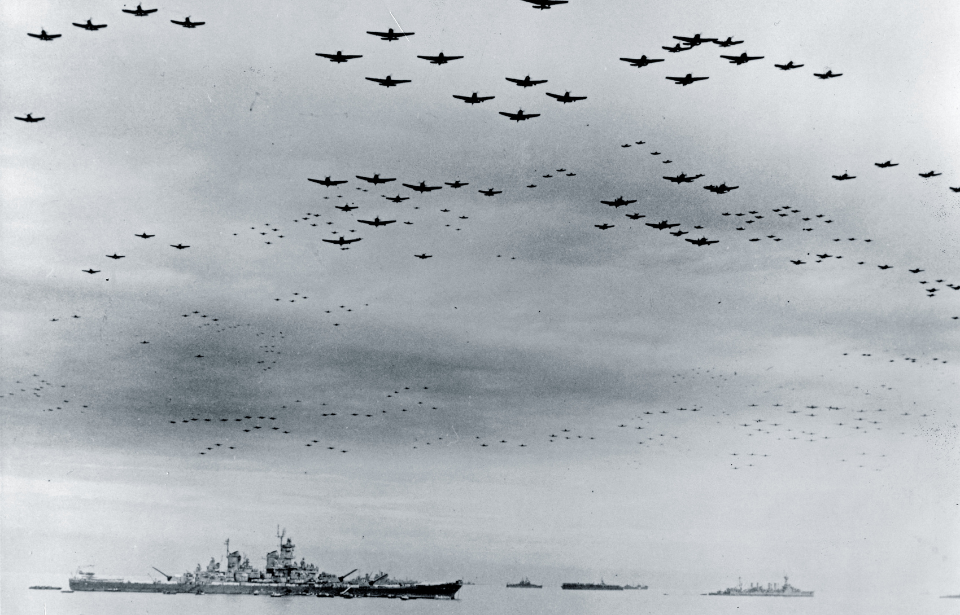Following the atomic bombings of Hiroshima and Nagasaki by American forces, Emperor Hirohito announced Japan’s surrender on August 15, 1945. Just over two weeks later, Foreign Affairs Minister Mamoru Shigemitsu and several other Japanese officials boarded the USS Missouri (BB-63) to sign the document, officially known as the Instrument of Surrender.

Following Germany’s surrender in May 1945, the Allies focused their attention on the Japanese, who were still bringing the fight in the Pacific. Despite having experienced success in the early years of World War II, the empire was steadily beginning to lose its gains, with devastating defeats in the Marianas and the Philippines in 1944 and ’45.
The Allies set their sights on Okinawa and Iwo Jima, securing both in what can only be described as incredibly bloody battles. It was thought these landings and continued strikes on the country’s forces would force Japan to back down, but, instead, it kept fighting. This led to the development of Operation Downfall, the proposed Allied invasion of the Home Islands – think D-Day, but in Asia.
On July 26, 1945, before the plan could be enacted, the Allies issued the Potsdam Declaration, which called for Japan’s surrender. It was signed by British Prime Minister Winston Churchill, US President Harry S. Truman and Chinese Chairman Chiang Kai-shek. A few days later, on August 6 and 9, the Americans dropped the atomic bombs Little Boy and Fat Man on Hiroshima and Nagasaki.
With such widespread devastation – hundreds of thousands were killed and injured – Japan had no choice but to surrender. On August 15, Emperor Hirohito made a radio broadcast, announcing the country’s government agreed to the Potsdam Declaration and Japan’s surrender.
The Japanese Instrument of Surrender was signed by Mamoru Shigemitsu, Gen. Yoshijiro Umezu, US Gen. Douglas MacArthur, Adm. Chester Nimitz and other Allied officials aboard the USS Missouri on September 2, in Tokyo Bay. Well over 250 Allied vessels were present, with pilots taking to their aircraft to celebrate the end of what had been a grueling and deadly conflict for all involved.

Almost immediately after, investigations into alleged Japanese war crimes began, both for the events that occurred during WWII and those that resulted from the Second Sino-Japanese War. According to estimates, between 3,000,000 and 30,000,000 died at the hands of the Imperial Japanese Army (IJA) and Navy (IJN).
More from us: HMS Sussex (96): The British Heavy Cruiser That Survived a Kamikaze Strike
Several thousand Japanese officials and military personnel were indicted, with many being convicted and sentenced to either death or imprisonment.
